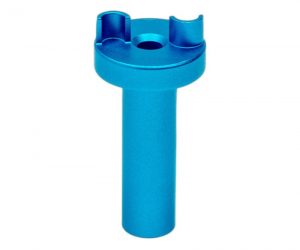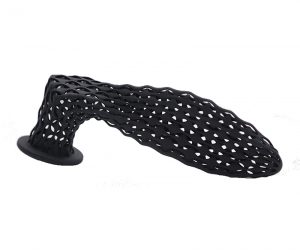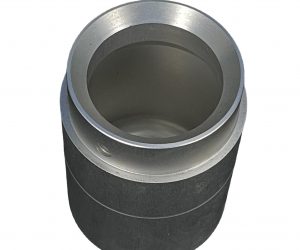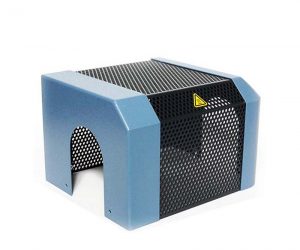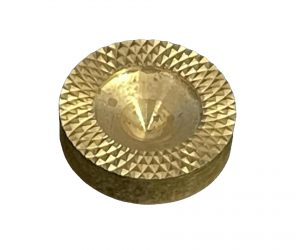The problem of dark color and poor gloss in injection molded parts can be attributed to several factors related to material selection, processing conditions, and mold design. Here are some solutions to address these issues:
- Material Selection:
a. Choose High-Quality Resins: Select high-quality plastic resins with good color stability and processing characteristics. Cheaper or recycled materials may lead to darker colors and reduced gloss. b. Color Masterbatch: Consider using color masterbatch instead of direct pigment addition. Color masterbatch ensures better dispersion and color consistency. c. Opt for Lighter Colors: If possible, opt for lighter color options for the plastic resin, as dark colors are more likely to show poor gloss. - Processing Conditions:
a. Temperature Control: Maintain precise control over the barrel and mold temperatures during the injection molding process. Proper temperature control can prevent degradation of the material and improve gloss. b. Injection Speed: Adjust the injection speed appropriately to ensure proper material flow and prevent visual defects like streaks or splay marks. c. Injection Pressure: Optimize the injection pressure to achieve consistent filling and minimize the chances of dark spots or poor gloss. d. Cooling Time: Allow sufficient cooling time for the molded part to solidify completely. Proper cooling helps in achieving a smoother surface finish. - Mold Design:
a. Venting: Ensure proper venting in the mold to allow air and gases to escape during injection. Inadequate venting can cause air traps and lead to darker spots and gloss issues. b. Surface Finish: Pay attention to the mold surface finish. Highly polished molds can result in parts with better gloss. c. Gate Design: Optimize the gate design to achieve good flow of the molten material without causing excessive shear stress or material degradation. - Mold Maintenance:
a. Regular Cleaning: Regularly clean and maintain the mold to prevent contamination or build-up of residue, which could affect the part appearance. b. Mold Release Agents: Use appropriate mold release agents to ensure easy part ejection and minimize the risk of surface defects. - Colorant Dosage and Mixing:
a. Proper Mixing: Ensure accurate measurement and mixing of colorants or masterbatch with the base resin to achieve consistent color distribution. b. Dosage Control: Carefully control the amount of colorant or masterbatch added to achieve the desired color and avoid excessive darkening.
By addressing these aspects during material selection, processing, and mold design, manufacturers can significantly improve the color and gloss of injection-molded parts, resulting in visually appealing and high-quality finished products. Regular monitoring and adjustments may be necessary to fine-tune the process and achieve optimal results.
Injection mold is a tool used to produce plastic products. It can not only give plastic products a complete structure and precise size, but also dark color and poor gloss are often encountered during processing and manufacturing. So, what is the cause of dark color and poor gloss? How to solve this problem?
First, the dark color and poor gloss may be due to poor surface quality of the injection mold. During long-term use and wear, problems such as scratches, oxidation or corrosion may occur on the mold surface. These problems will affect the surface quality of plastic products, resulting in dark color and poor gloss. In order to solve this problem, the injection mold can be cleaned and maintained regularly, using appropriate cleaning agents and tools to remove surface dirt and oxides, and timely repair or replacement of severely worn parts.
Secondly, dark color and poor gloss may also be related to the design and manufacturing of the injection mold. If the design of the mold is unreasonable or the manufacturing process is not precise, it may cause depressions, bubbles or other defects on the surface of the plastic product, thus affecting its appearance quality and gloss. To solve this problem, the design of the mold can be optimized to ensure that it can adequately fill the plastic material and create a uniform surface. At the same time, process parameters must be strictly controlled during the manufacturing process to ensure the accuracy and quality of the mold.
In addition, dark color and poor gloss may also be related to the plastic material used. Different plastic materials have different characteristics and performance, and some of them may cause dark colors and poor gloss during the injection molding process. In order to solve this problem, you can choose suitable plastic materials and choose plastic materials with good gloss according to the requirements of the product. At the same time, the gloss of plastic products can also be improved by adjusting injection molding process parameters, such as injection speed, pressure and temperature.
To sum up, when injection molds encounter problems of dark color and poor gloss during processing and manufacturing, they can be solved from the surface quality, design and manufacturing of the mold, and the selection of plastic materials. By regularly maintaining and cleaning molds, optimizing design and manufacturing processes, and selecting appropriate plastic materials, the appearance quality and gloss of plastic products can be improved to meet user needs.
In the normal production, processing and manufacturing process of injection mold, the luster of mold surface is mainly determined by the type of plastic, colorant and mold surface finish. The causes and solutions of dark color and poor gloss are as follows.
- The injection mold has poor finish, the cavity surface has rust, etc., and the mold has poor exhaust.
- Too many recycled materials are used, the quality of plastics or colorants is poor, water vapor or other impurities are mixed, and the quality of lubricants used is poor.
- The pouring system of the injection mold has defects, so the cold well, runner, polishing sprue, splitter and gate should be increased.
- The material temperature and mold temperature are too low. If necessary, local heating at the gate can be used.
- The plastic shall be fully plasticized, but the degradation of the material shall be prevented, the heating shall be stable, and the cooling shall be sufficient, especially for the thick wall.
- The clamping force shall be sufficient during the production and manufacturing of injection mold.
- The processing pressure of injection mold is too low, the speed is too slow, the injection time is insufficient, and the back pressure is insufficient, resulting in poor compactness and dark surface.
- To prevent cold materials from entering the parts, use self-locking springs or reduce the nozzle temperature when necessary.
The above 8 points can be well done to avoid the dark color and poor gloss of the injection mold. Even if this phenomenon occurs in the production process, remedial measures can be well done to minimize the impact on the production progress of the enterprise and increase the production efficiency of the enterprise.
Injection molding within the manufacturing of plastic products is one of the most widespread methods. However, there are processes which may lead to dark-colored and rough glossy appearances, which is highly undesirable with respect to the look of the final product. Herein, we can show several possible solutions for this effect.
Material Selection: Selection of the right material is one of the most key factors to achieving good surface quality in injection molding. Certain materials tend to underline high dark color and poor gloss, which enforces the selection of those materials that can achieve desired appearance.
The injection molding process parameters themselves are another determining factor in the looks of a finished product. The adjustment of injection pressure and temperature against speed depends on the desired surface finish.
Mold Design: The design of the mold itself can be critical for good surface quality. Its design should be optimized for the particular material under operation and with proper ventilation for air to run off from the mold cavity.
Mold Maintenance: The mold shall be regularly maintained so that no problems appear in the form of dark color and poor gloss. It should be cleaned regularly, with any wear and tear or damage to be repaired as soon as possible.
Manufacturing: Some post-processing techniques can be polishing and painting in order to enhance the appearance of the final product. The process may be done to remove any kind of surface imperfection and undertake the desired surface finishing technique.
Conclusion: The improvement in the surface finish by injection moulding demands great detail in material selection, injection moulding process parameters, mould design and mould maintenance. Final improved appearance of the product can also be given after processing by using different post-processing techniques. By following these steps, one can easily produce quality products with the desired surface finish.
